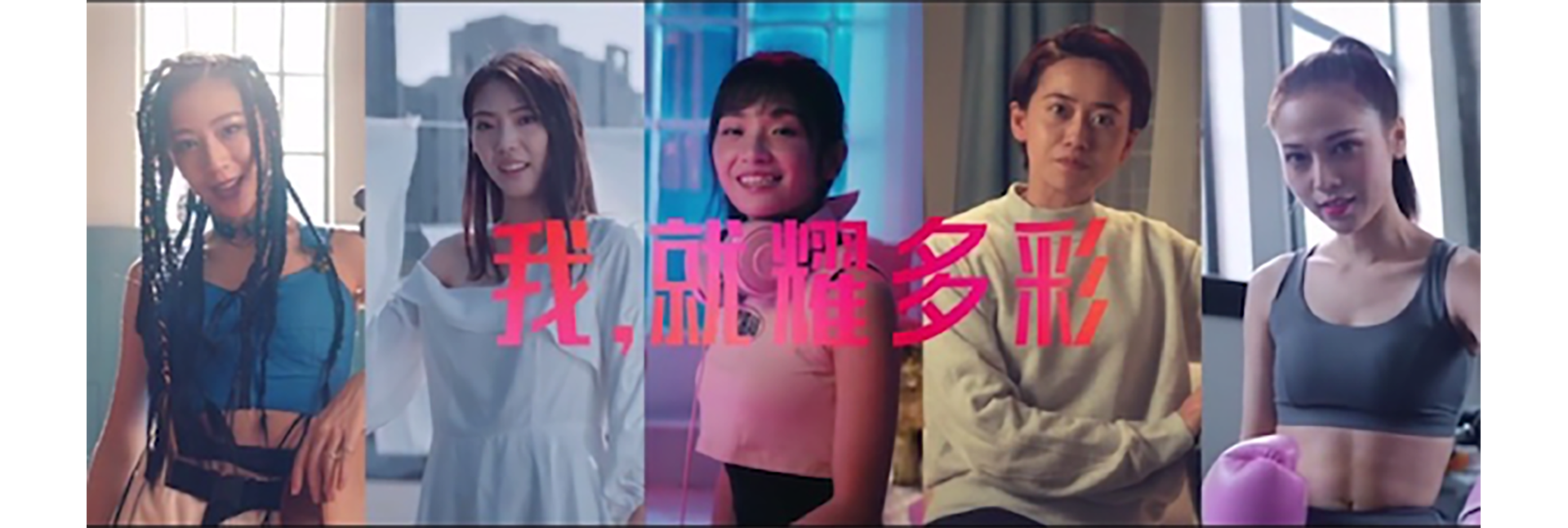Whilst conducting research with post-90 females in Tier 1 China we discovered that there is a fundamental mismatch between notions and ‘standards’ of femininity with actual aspirations of younger women in China. It raised questions around what aspirational contemporary femininity is today and how can brands understand it in order to better engage their female consumers?
The Challenge Today In Viewing Femininity Through The Gender Binary
We observed two intertwined femininity narratives in popular culture and women-centric categories such as beauty.
Firstly, a departure from traditions, going beyond and even relinquishing roles of wife and mother to pursue their passions and focus on building careers.
Secondly, adopting masculine traits in order to participate in a man’s world as ‘equals’.
Hit television series such as “Ode to Joy” (2016) and “The First Half Of My Life” (2017) have portrayed alpha female characters who adopted typically ‘male’ traits. Chastising employees and prioritising career over relationships with stony hearts (冷酷无情) or iceberg faces (冰山脸), are viewed as enablers for women to achieve prestige and success in man’s world, and to break out of traditions that held them back from fulfilling their personal goals.
Brands have also activated around this model of femininity, as seen in LUX’s 2018 TVC.
“决心就是光芒 “Determination is what shines 我没有羽翼,我有铠甲 I don’t have wings, I have armour 我选择修炼铠甲,披荆斩棘 I choose to cultivate my armour, clearing obstacles to overcome challenges 坚韧就是光芒” To shine is to have tenacity”

Here, ‘feminine power’ is infused with combative imagery, underscoring the need to be tough and to adopt typically masculine traits, in order to confront the social mores that prevent women from succeeding.
But while masculinised womanhood has proven to help women self-actualise in modern China and remain dominant, in recent years more women have distanced themselves from this model of femininity. Stories of people shunning overly strong women have also surfaced online.
I aspire for qualities that are more gender neutral, because men and women, it’s all quite fluid now. I want to feel accomplished and still have fun with my close friends. I don’t want to be overly strong, masculine, or come across as aggressive 强势. – Post-90 Female, Tier 1 China
As more women have agency and experience success, so have their strategies and idea of womanhood changed.
How then can we approach understanding and defining contemporary femininity in China?
Reimagining Femininity
The problem with understanding femininity through a gender binary, in which becoming more masculine is seen as the way to be a modern and successful woman, is the drastic departure from core feminine traits. Traits such as nurturance, gentleness, and empathy were sacrificed as women sought strength, independence and assertiveness; the more ‘feminine’ former deemed inferior to the more ‘masculine’ latter.
The problem of masculine femininity is also evident in the ubiquitous critical label of ‘leftover women’ – women over 27 years old, with financial independence and ascending careers but who are single and unmarried. It underscores how modern femininity still has to encompass conventionally female milestones such as marriage and familial duties, in order to be celebrated.
The notion of the modern woman should therefore not be the antithesis of the traditional woman, but view conventional traits and roles as the foundation, to be adapted and added to in order to arrive at an aspirational model of femininity suited to the times and to young women today.
Brands should therefore relinquish a binary masculine-feminine paradigm, for one that views femininity in a more pluralistic manner, where the established and emerging, traditional and modern, and even ‘feminine’ and ‘masculine’, co-exist and amalgamate.
Understanding Contemporary Femininity: The Expanding Identities Paradigm
An Expanding Identities Paradigm achieves this. Values, traits, strategies of gender and becoming viewed without gendered lenses, allows one to understand and construct femininity in ways that are more resonant and aspirational to Chinese women today.

The foundation of this paradigm are aspects of established, conventional femininity which have become culturally ingrained, forming a core code that many women still identify with.
Layered over, are new value configurations that women increasingly relate to, seek and adopt, as they pursue their lifestyle and goals. These configurations and their associated behaviours, traits, and strategies may be borrowed from masculinity, or other non-gendered modes of being, such as foreign cultures or even animals!
What we arrive at is a recalibrated contemporary ideal of womanhood and femininity in China: Progressive Femininity.
Brands attuned to the pulse of Chinese culture have already tapped into this, evident in Tmall’s 2019 ‘Women’s Day’ TVC, which captures where femininity is headed in urban China.

我,天性爱美 It’s my nature to love beauty 也本性好动 but I am also active; 你可以说我叛逆,You can say I am rebellious, 但这也是我的优雅 but I have my elegance; 可以率性出发 I can set off spontaneously 温柔去爱 and to love with my gentleness 也能精致地去冒险 I can go on adventures delicately 精彩 colourfulness 不止一面 is not limited to one side 我,就耀多彩 I am shining through multifaceted self
The ad emphasises how women today possess multiple facets, can be who they want to be, and should be confident in their choices and pursuits. They can be comfortable embracing conventional feminine roles and traits without fear of being judged as traditional or dated, and can actively pursue the unconventional and edgy knowing they do not make her less of a woman. Instead, they can have many sides, expanding the notion of who they are and can be without contradictions or having to give up an existing part of themselves.

A woman can be beautiful – fair skin, V-shaped face, with long black hair – and have physical strength and do hardcore fitness training.

A woman can have dreadlocks, look rebellious and boorish, and play the cello elegantly.

A female biker donning a leather jacket can – surprise! – also be a loving and nurturing mother.
It reflects the inclusive nature of Progressive Femininity, welcoming different qualities and values with a “both-and” attitude, while rejecting an “either-or” view of gender.
Decoding Progressive Femininity in China and Its Brand Implications
So what is new femininity in China today, particularly in metropoles?
Progressive Femininity has three key expressions:
1. Reclaimed Femininity – which retains conventionally ‘feminine’ traits but positively reconstructs them as desirable, relevant and advantageous in society today.
2. Feminised Multidimensionality – which amalgamates different desired traits and values with a uniquely female interpretation, resulting in a more layered, vital, yet still ‘feminine’ identity.
3. Gender Neutrality – which embraces free, open definitions and modes of being that are not coloured by gender binaries, anchored by a sense of agency and freedom of self-expression.
To continue being relevant and be ahead of competition, brands need to understand not just who their customers are but where they are headed, and to constantly update this understanding given the rapid pace of change in China.
For brands that focus on women, the desire to quickly identify and activate trends and changes at the forefront of gender discourse should not forsake deeply embedded cultural codes of femininity. Doing so will risk alienating consumers – the exact opposite of what brands wish to achieve. Instead, comprehensive and deep understanding of recessive, dominant, and emerging is necessary to arrive at insights that can design aspirational brands of the future.






